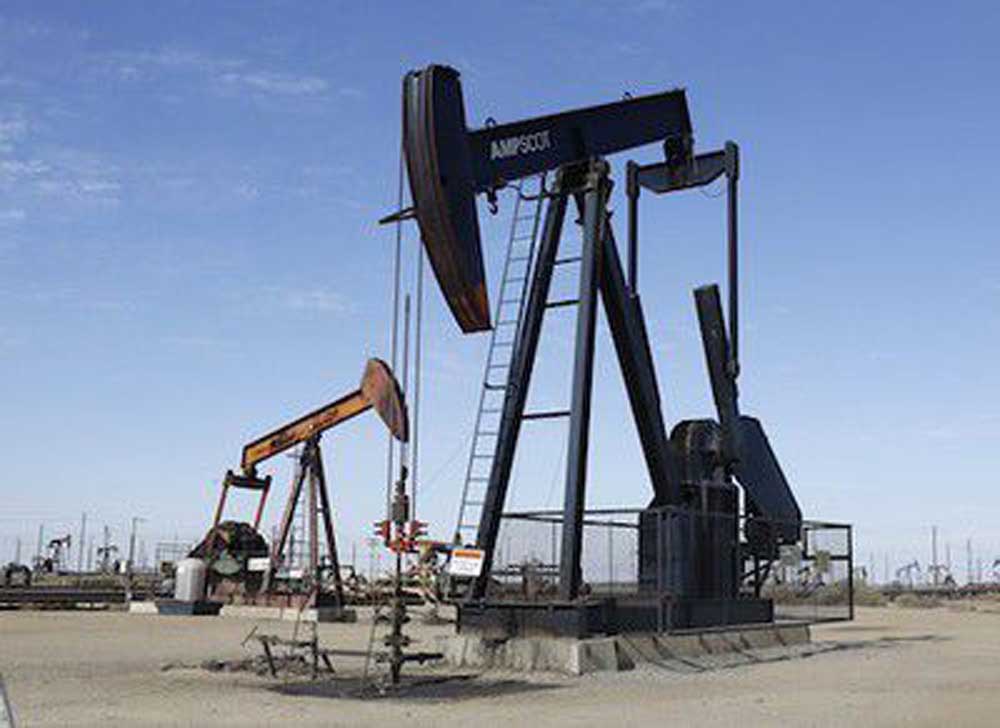The peak oil theory has peaked
Published 3:30 pm Friday, September 30, 2016

- (AP Photo/Rich Pedroncelli, file)
Writing for Realclearpolitics.com, Bill Murray and Carl Cannon report an interesting fact: It’s 2016, and “peak oil” hasn’t peaked.
“In 1957, Tulsa celebrated Oklahoma’s golden anniversary of statehood by placing in a concrete vault under the county courthouse a host of mid-20th century artifacts, including a 16mm movie, a six-pack of Schlitz better, and a woman’s purse with bobby pins, lipstick, and a pack of cigarettes that retailed for 50 cents a pack,” they write. “It was all to be unearthed in another 50 years, so the organizers included a commodity they figured might not be around in 2007: five quarts of motor oil and 10 gallons of gasoline.”
Trending
That’s because of peak oil theory – a nearly religious tenet of the environmental movement.
“It became an underlying basis for everything from Jimmy Carter’s admonition to turn down the nation’s thermostats, the enactment of 55-mile-per-hour speed limits, and federal mandates on gasoline standards for cars and trucks,” Murray and Cannon write. “Today, the question is how policymakers should react when the conventional wisdom is proven so spectacularly wrong, as is the case here.”
How wrong were they?
“The theory itself was promulgated and then popularized by M. King Hubbert, a Shell Oil Co. geologist who predicted in a 1956 scientific paper that U.S. oil production would peak in the early 1970s at 10 million barrels a day – and then begin a long inexorable decline,” they write. “But an unexpected development occurred in the 21st century, a century that the naysayers had said would be one with scarce crude oil resources: The supply instead exploded.”
We now produce 97 million barrels of oil per day.
“In 2007, the U.S. produced 5.1 million barrels of crude a day, while Oklahoma produced 175,000 barrels a day,” Murray and Cannon write. “A short eight years later, the U.S. produced 9.4 million barrels a day and Oklahoma had more than doubled its production to 432,000 barrels a day.”
Trending
The Obama administration is a true believer however. In a speech in 2011, President Obama declared, “we can’t just drill our way to lower gas prices.”
Well of course we can. That’s how supply and demand work.
“His statement happened at exactly the time when unconventional oil production began adding roughly 1 million barrels a day of growth each year through 2014, which in turn helped cause the decline of prices to their current levels,” the authors note.
Now, there’s certainly some truth to the theory. The world’s supply of oil is, in fact, finite – in part because we’re not making any more dinosaurs.
But the supply is much, much larger than the peak oil theorists believed.
And at the same time, we’re becoming more and more energy efficient – we need less fossil fuels than we ever have.
The free market deserves a lot of the credit that. Companies, as well as consumers, seek to trim their expenses, and energy is always a big expense. There’s a built-in motivation for efficiency that everyone responds to.
So let’s dismiss the peak oil theory, once and for all.






